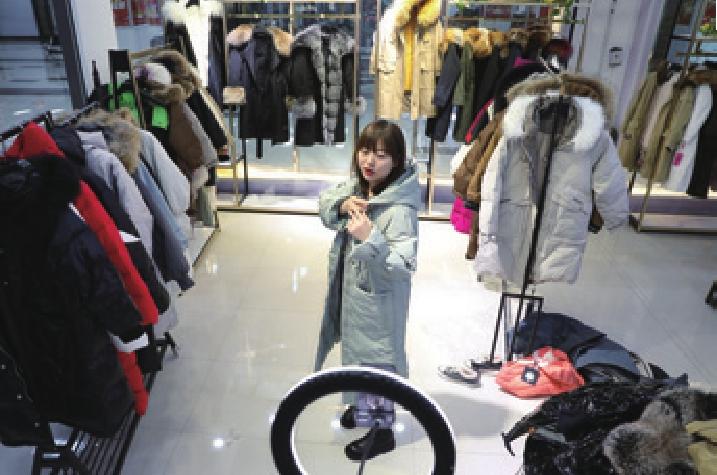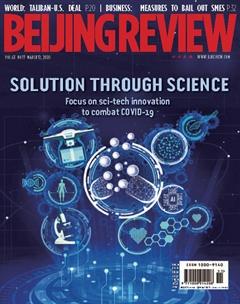Long-Term Hopes Remain Strong
By Jiang Yuechun & Zhang Yuhuan
As the novel coronavirus disease(COVID-19) has spread beyond China to all continents except Antarctica, it will inevitably impact the Asia-Pacific economy in the short term. But from the medium and longterm perspective, there is no need to be overly pessimistic.
Some reports have compared the situation to 2003, when the severe acute respiratory syndrome (SARS) that broke out in China spread to more than two dozen countries. However, as both Chinas conditions and the global landscape have evolved dramatically since then, the infl uence of COVID-19 on the economy will be different.
A different scenario
The SARS outbreak did not seriously affect the economic growth of the Asia-Pacifi c or the rest of the world. In 2003, with rapid expansion of economic globalization, new technologies and rapid growth in global trade, investment and financial sectors, the global GDP growth was 2.96 percent, higher than in 2002, according to the World Bank. From 2004 to 2007, the annual GDP growth rate in the Asia-Pacific remained above 5 percent. The upsurge continued until the fi nancial crisis erupted in the U.S in 2008.
However, things are different now. The world economy, still mired in the aftermath of the financial crisis in 2008, is further weighed down by an anti-globalization tide and lack of growth drivers. Chinas role as a world economic growth engine is hampered by U.S. trade protectionism and its negative impacts such as a weak external demand.
On the other hand, Chinas economy is stronger than before. In 2003, Chinas GDP accounted for 4.27 percent of the world total, and 19.3 percent of that of East Asia and the Pacifi c. In 2018, these fi gures rose to 15.84 percent and 52.46 percent respectively. In 2003, two years after acceding to the World Trade Organization, China experienced rapid industrialization and urbanization, with its GDP growing at double-digit rates.
The economic shock of SARS was limited, both for China and the Asia-Pacific. But COVID-19 might bring about bigger concussions considering that China is now at a critical transition period, endeavoring to transform its economic growth model, upgrade the economic structure and change the growth drivers. It is also facing downward pressures.

Service sectors in the region will take a hit due to the sharp dwindling of Chinese tourists. Tourism, transportation and catering in the Asia-Pacific region, especially in Japan and Thailand, will be among the hardest-hit. It was predicted that about 400,000 Chinese visitors would cancel their Japan trip before March. From February to June, the number of tourists to Japan is estimated to decrease by 30 percent year on year. The Economist Intelligence Unit of the Economist Group predicted that the virus might lead to a loss of $80 billion for the global tourism industry as the volume of Chinese outbound tourists will not bounce back to previous level until the second quarter of 2021.
China is an important destination of exports from other Asia-Pacifi c economies. With many stores shut down and people staying at home in China, the goods trade between China and other Asia-Pacifi c countries will be affected.
U.S. soybean exports to China fell to the lowest level in 10 months, the U.S. Department of Agriculture said on February 13, although according to the phase-one trade deal signed between the two countries, China will import more agricultural products from the U.S. Exports of good from Australia, New Zealand and ASEAN to China will also be impacted. According to a projection by the International Energy Agency, the global petroleum demand will increase by only 825,000 barrels per day in 2020, far less than the previous estimate of 1.2 million barrels daily.
Staying positive
While the short-term impact of COVID-19 on the Chinese and the overall Asia-Pacific economy may be more severe than during SARS, the time the virus is brought under control will be an important factor determining economic trends in this year. If the epidemic can be controlled in the fi rst quarter, economic growth will resume or even bounce back sharply. In this scenario, Chinas long-term development will not be impacted and the Asia-Pacifi c economy will recover sooner.
But if the epidemic cant be contained in the short run, the service industry might take a year to pick up, which means more harm for both the Chinese and the Asia-Pacific economy.
The Asia-Pacific is taking countermeasures in response to the epidemic. For instance, China has introduced various policies encouraging businesses to resume production, and Southeast Asian countries including the Philippines, Thailand and Indonesia have introduced monetary easing policies.
As long as the spread of COVID-19 can be effectively contained, the overall economic growth trend will not be reversed. After the epidemic is over, the Chinese economy will resume steady growth, and the industrial supply chain in East Asia will return to normal. The growth of the major Asia-Pacifi c economies and the world economy is expected to resume after the middle of this year.

